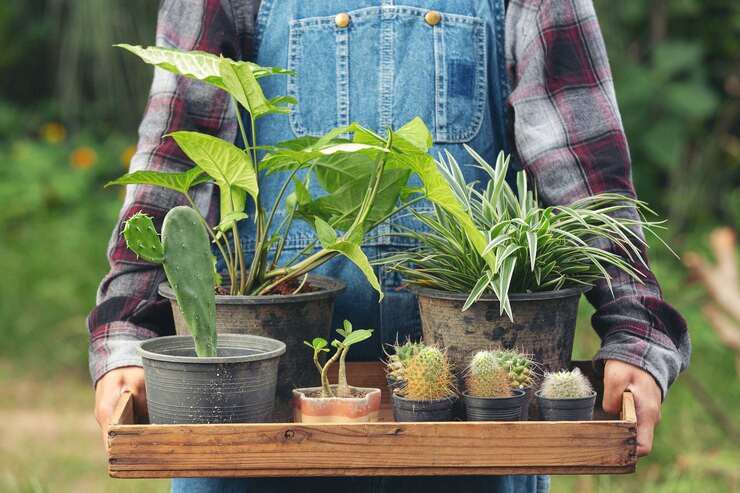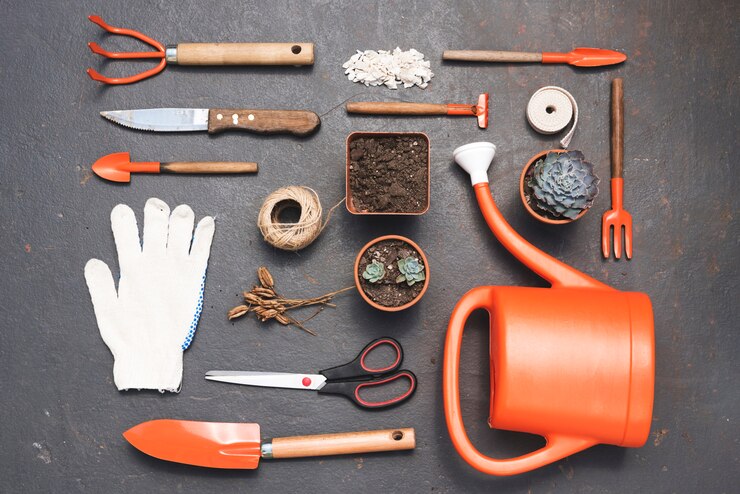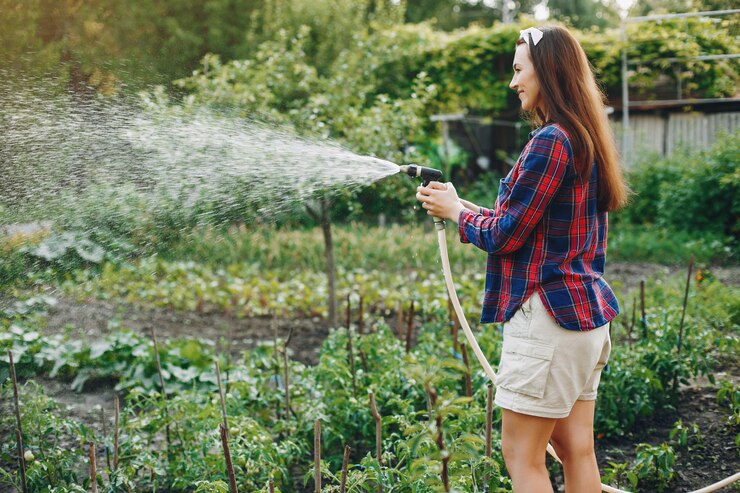Gardening is one of the most rewarding hobbies there is, but it is also very defeating, especially if something goes wrong in terms of pests within the garden. It is absolutely necessary that a beginner in gardening really learns some of the best ways of controlling Pest Control Techniques for Home Gardens.
This article shall look at several of the natural methods of control, quite easily implemented, which in turn will ensure that your garden stays productive and lush without the need for noxious chemicals. These different techniques protect your plants, promote biodiversity, and help contribute to a sustainable gardening environment Pest Control Techniques for Home Gardens.
Understanding the Importance of Pest Control in Home Gardens
Pest control is a very important aspect of home gardening and is necessary for the health of your plants to be maintained without any loss occasioned by insects, diseases, and other categories of pests. A well-cared-for garden adds beauty to your home, food security, and health of the environment. Here are some reasons why it is indispensable:
• Plant Health Protection: Pests can cause extensive damage to plants, loss in yield production, and might further cause the death of plants.
• Encourages Biodiversity: Healthy gardens support types of life forms including useful insects that might help in reducing the population of pests.
• Practices Sustainability: Methods of natural pest control reduce dependence on chemicals and maintain ecosystem healthiness.
Natural Garden Pest Control Techniques for Home Gardens
1. Companion Planting
One of the best methods of pest control in a home garden is companion planting. This is done along with other plants to provide some benefit to others, usually related to pest control, enhanced growth, and flavor improvement.
How it works:
Some plants repel pests, while other plants attract good insects that feed on the bad ones. For example:
• Marigolds: they have a fragrance which would help in keeping the nematodes and aphids away.
• Basil: this helps in keeping spider mites and white flies away from your tomato plants.
• Nasturtiums: these plants are excellent to attract aphids to leave the more valuable vegetables alone.
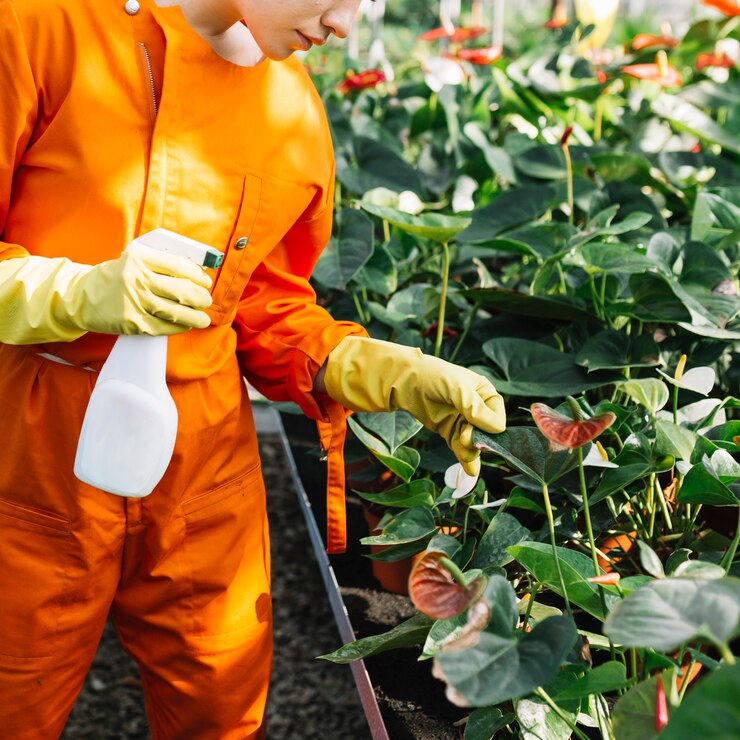
2. Organic Spray
The second effective Pest Control Techniques for Home Gardens is by making organic spray with items that can be found with ease around the house. Organic sprays will keep these pests at bay but will not harm the harmless insects.
Common Organic Spray Recipes:
• Soap Spray: Emulsify one tablespoon of liquid soap, not detergent, in a quart of water. This suffocates soft-bodied pests such as aphids and spider mites.
• Garlic Spray: Combine several cloves of garlic in water; filter the resulting solution and spray it on the afflicted plants. The penetrating aroma frightens many pests away from being anywhere near the site.
• Pepper Spray: Mixing hot pepper flakes with water and a bit of soap will work the trick. Most kinds of pests prevent because of the spiciness this mixture possesses.
3. Physical Barriers
One of the most assured ways of protecting your plants from pests without using chemicals is by using physical barriers. These keep the pests away from your plants but let the sun and rain give the nourishment required.
Types of Barriers:
• Row Covers: Well-ventilated fabric covers that allow sunlight and moisture to come through but help protect the young plants against insects.
• Netting: Fine mesh netting may help in excluding birds and bigger insects, yet still provide good air movement.
• Copper Tape: Putting copper tape on pots will keep slugs and snails away, as they react to copper.
4. Encouraging Beneficial Insects
Beneficial insects help you naturally bring down pest populations and can be crucial to ecological balance in your garden. Beneficial Insects to Attract: Ladybugs-they feed on soft-bodied insects such as aphids, white flies, etc. Lacewings larvae consume enormous amounts of aphids and caterpillars. Parasitic wasps-they lay their eggs inside/on the bodies of pest insects, thereby helping with pest populations.
How to Attract Them:
Some flowers, such as dill, fennel, and yarrow, attract helpful insects to the garden.
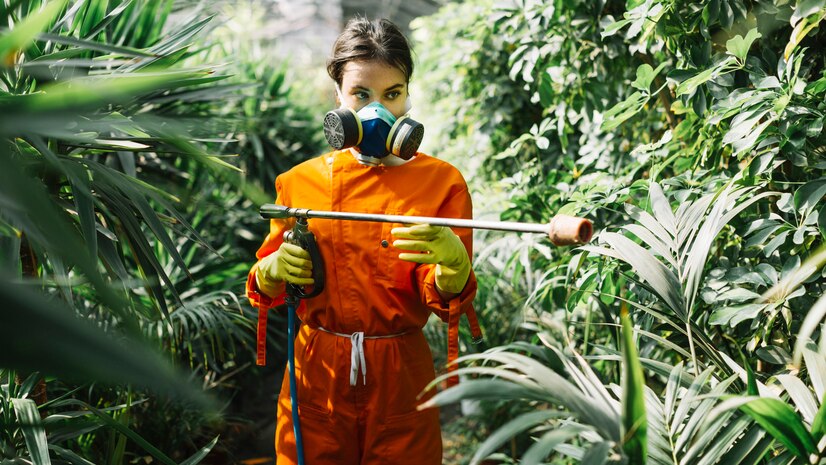
5. Regular Monitoring and Maintenance
Monitoring of a garden is regularly necessary for the purpose of early detection of problems caused by pests. Through regular monitoring, one is able to spot a problem well before it gets out of hand.
Monitoring Tips:
• Check Plants Weekly: Be aware of pests or damage on the underside of leaves and at the base of plants.
• Garden Sanitation: Remove dead leaves and rubbish that may be providing shelter for pests regularly.
• Crop Rotation: Shifting the position of your crops from one season to another may interfere with the life cycles of pests.
6. Traps and Lures
Trapping is another efficient way of pest control in your garden. There are several types of traps that collect or repel unwanted insects while minimizing the harm to their valuable cousins.
Types of Traps:
• Sticky Traps: Yellow sticky traps attract flying insects like whiteflies and fungus gnats.
• Beer Traps: Slugs are lured by beer, falling into the container buried into the soil, thus drowning.
• Pheromone Traps: These kinds of traps use synthesized scents which attract certain pests, including moths.
7. Organic Mulching
While mulching does retain moisture, it also prevents weeds and can help to keep some pests at bay. Organic mulches composed of materials like straw, wood chips, or clippings can offer even more additional benefits.
Mulching Benefits
Pest Deterring: Certain kinds of mulches can repel an infestation like slugs or beetles.
Adding to the Soil: Organic mulch adds nutrients to the soil as it decomposes.
Moisture Retention: Mulch helps retain the moisture in the soil.
8. Crop Diversity
Planting a diverse range of crops in your garden can reduce the chances of pest infestations. Monocultures or growing one single crop are more prone to pests than diverse plantings.
Some of the accrued benefits from Crop Diversity include:
• Breaking the Pests Life Cycles: Different plants host different pests. This makes the establishment of the latter very difficult.
• Soil Health: Increased Root Diversity produces healthy soil ecosystems.
Conclusion
Methods of natural Pest Control Techniques for Home Gardens are not only useful in maintaining the health of plants but also contribute to sustainable gardening practice. Companion planting, natural sprays, physical barriers, and encouragement of beneficial insects are some of the methods that a beginning gardener can make use of for effective pest management without using harmful chemicals.
The extra steps of regular monitoring and maintenance add to these and ensure that the garden is fully in bloom and healthy during the seasons. Now, let’s apply these methods to acquire the green thumb of a garden full of production and ecology friendliness!
Therefore, through these easy and effective methods of pest control alone, one saves a garden while building up a healthy ecosystem for the betterment of plants and wildlife together. Happy gardening!

